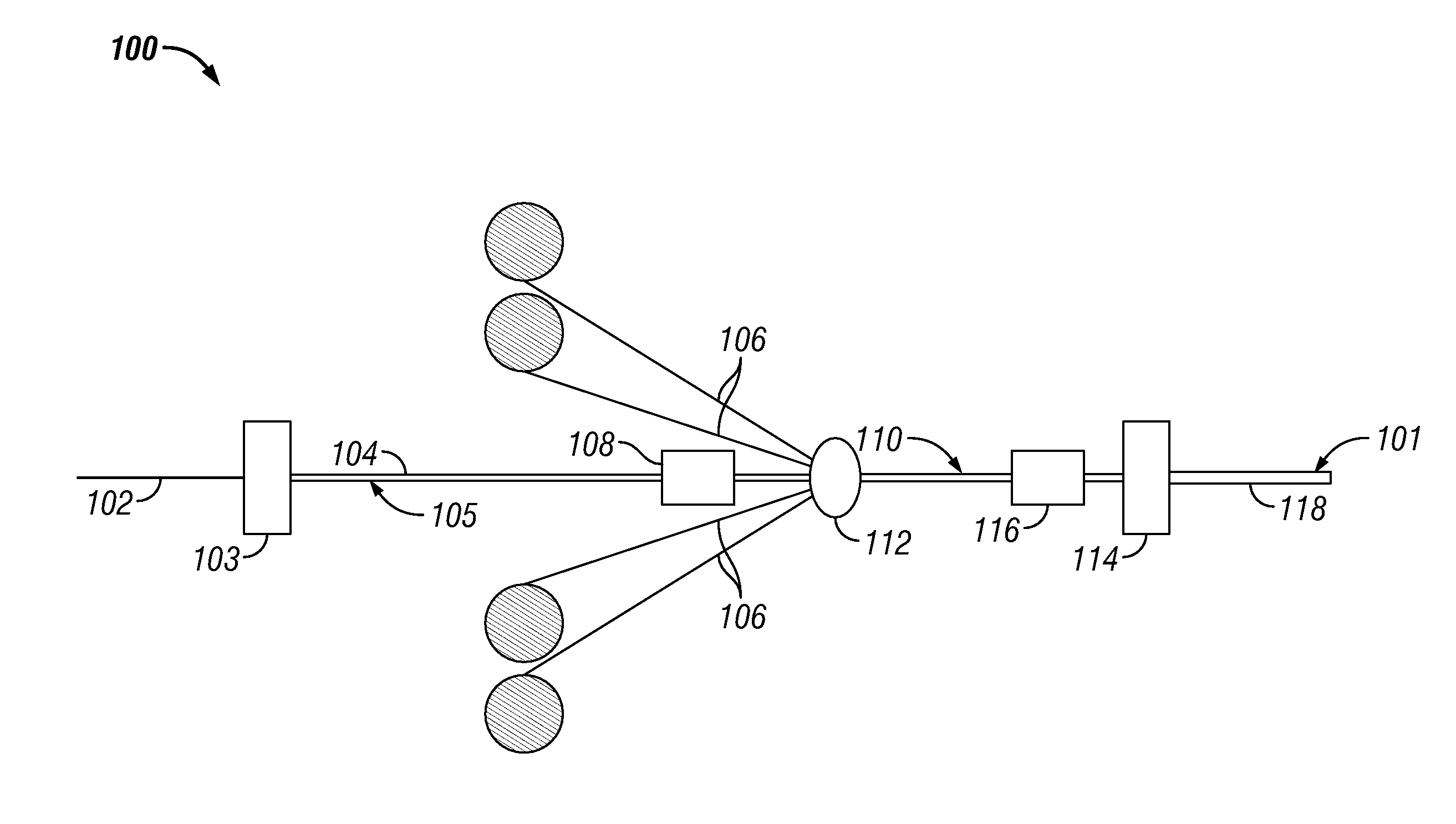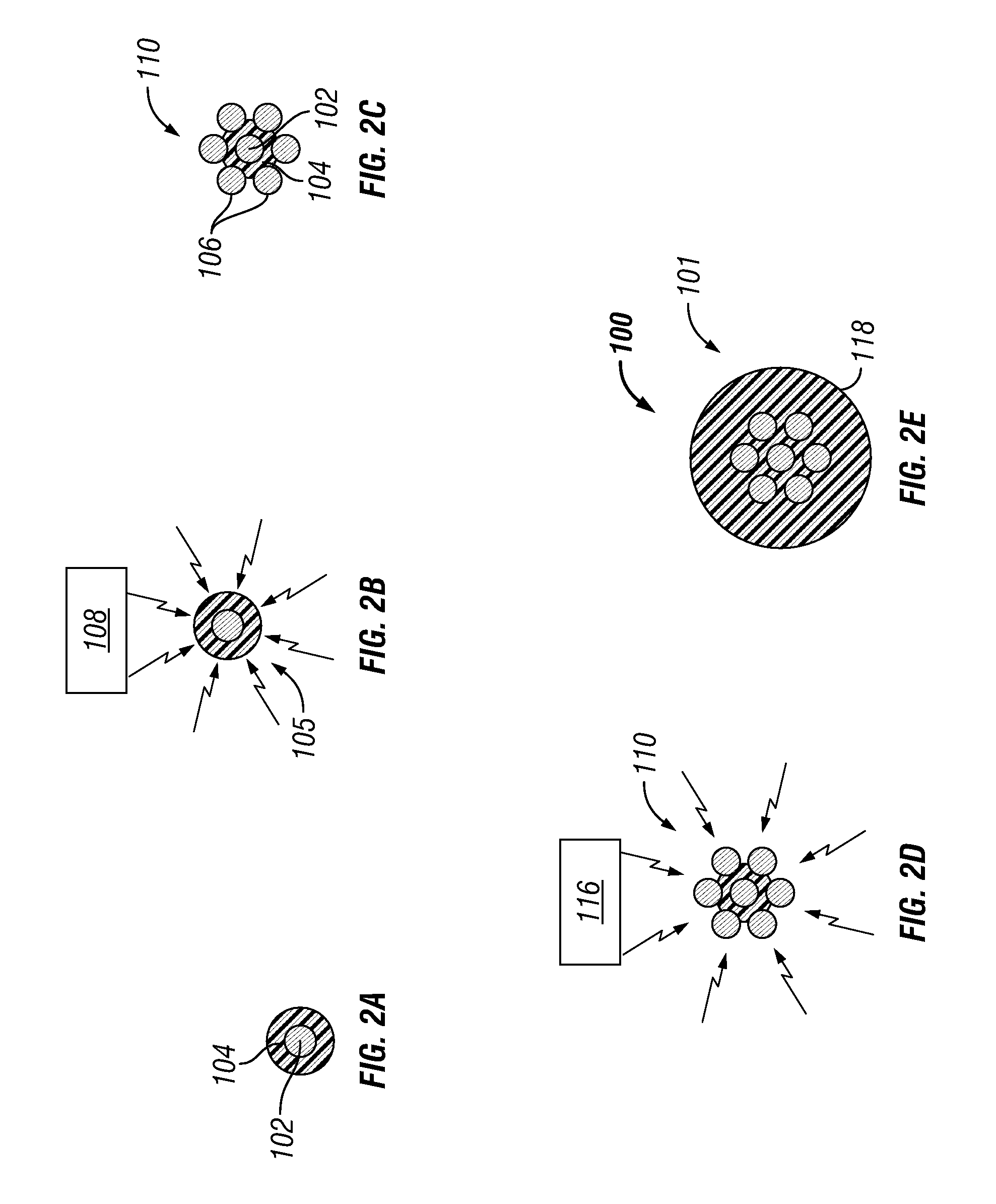Methods of manufacturing electrical cables
a manufacturing method and cable technology, applied in the direction of insulated conductors, power cables, cables, etc., can solve the problems of insulation not being able to penetrate into the spaces between the conductor strands, insulation being bulging, insulation to burst, etc., to achieve high coverage and eliminate interstitial spaces
- Summary
- Abstract
- Description
- Claims
- Application Information
AI Technical Summary
Benefits of technology
Problems solved by technology
Method used
Image
Examples
Embodiment Construction
[0034]At the outset, it should be noted that in the development of any such actual embodiment, numerous implementation—specific decisions must be made to achieve the developer's specific goals, such as compliance with system related and business related constraints, which will vary from one implementation to another. Moreover, it will be appreciated that such a development effort might be complex and time consuming but would nevertheless be a routine undertaking for those of ordinary skill in the art having the benefit of this disclosure.
[0035]Referring now to FIGS. 1 and 2a-2e, a method for forming a cable 101 is indicated generally at 100. The method 100 begins by providing, for example, a central coated strand of copper 102, and extruding (by, for example, compression extruding or tube extruding through an extruder 103) a layer of polymeric insulation 104 over the central strand 102 to form a cable conductor core 105. Those skilled in the art will appreciate that the central stra...
PUM
| Property | Measurement | Unit |
|---|---|---|
| diameter | aaaaa | aaaaa |
| diameter | aaaaa | aaaaa |
| polymeric | aaaaa | aaaaa |
Abstract
Description
Claims
Application Information
 Login to View More
Login to View More - R&D
- Intellectual Property
- Life Sciences
- Materials
- Tech Scout
- Unparalleled Data Quality
- Higher Quality Content
- 60% Fewer Hallucinations
Browse by: Latest US Patents, China's latest patents, Technical Efficacy Thesaurus, Application Domain, Technology Topic, Popular Technical Reports.
© 2025 PatSnap. All rights reserved.Legal|Privacy policy|Modern Slavery Act Transparency Statement|Sitemap|About US| Contact US: help@patsnap.com



